When you talk to riders about supermoto, the first thing that comes to mind is “cheap fun.” Supermoto has become known as a more frugal way to get on track and there is certainly nothing wrong with that, but what happens when someone offers a more elevated approach to the sport?
I went to the Live 100 Moto Supermoto School to find out what the upper tier of supermoto riding would look like.
The school
Established in 2018, Live 100 Moto Supermoto School is relatively new to the scene at Southern California’s go-kart tracks but founder Djamil Sakhri is no stranger to supermoto. From far-away roots in Algeria, Djamil helped organize Alger Pro Supermoto races and since being in the states has participated in a large variety of local and AMA Supermoto races. Djamil’s focus on competition fuels the Live 100 Moto Supermoto School’s mission — to serve serious riders with top-quality equipment, training and track time. And as testimony to their dedication to the highest levels of competition, Live 100 Moto offers bike rental and trackside support for any racer looking to grid up at their local or AMA Supermoto race.
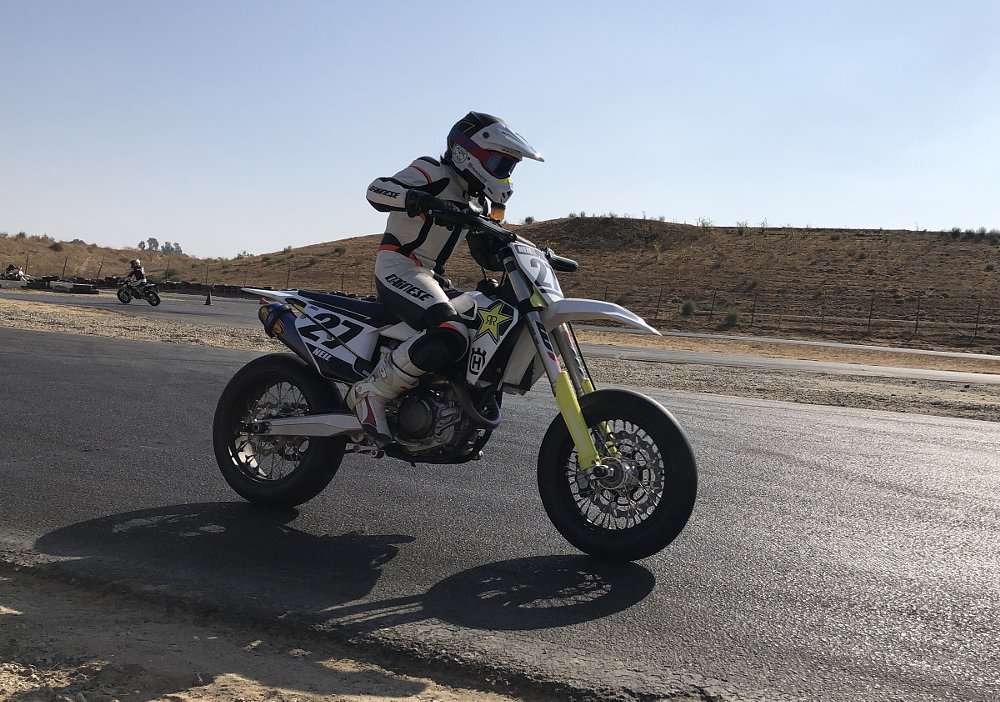
The bike
The Live 100 Moto rental fleet of competition-only Husqvarna FS 450s were bred for a singular purpose — slaying the supermoto track. Husqvarna took its championship-winning flagship motocrosser, the FC 450, and built the dedicated FS 450 supermoto as a pure performance race machine.
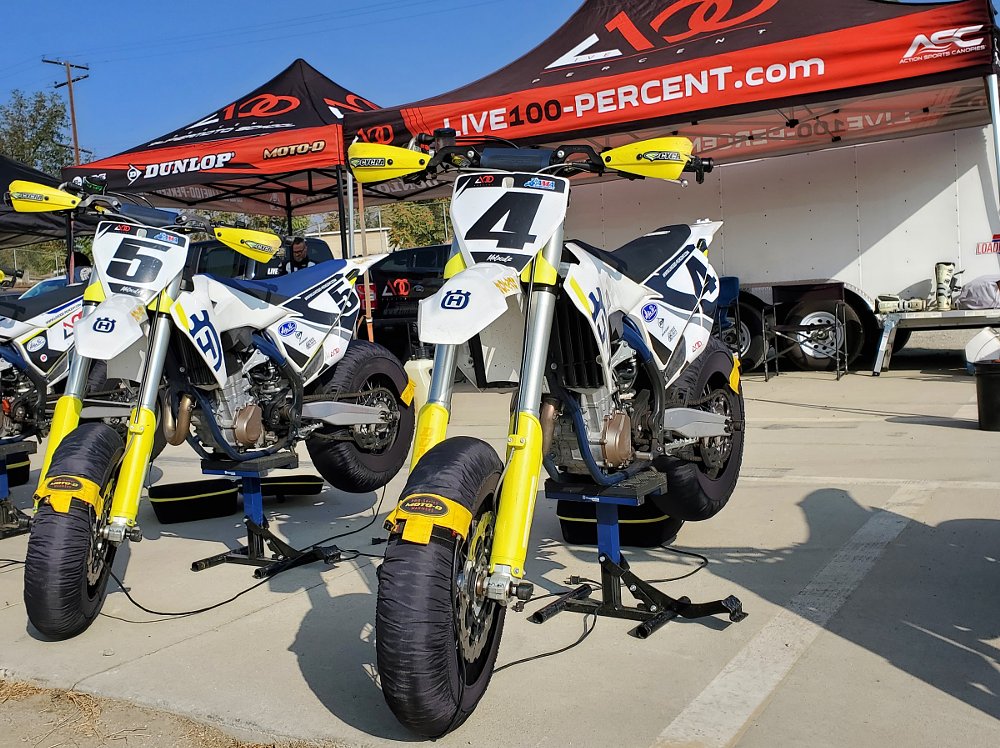
The bike comes fully loaded with all the goodies. Brembo brakes for incredible stopping power, WP Xact air forks for infinite and easy suspension tuning, a Suter slipper clutch that lets you back it in like a champ, and all the modern electronics, such as two ride maps, traction control, launch control, and electric start. As if the pinnacle of supermoto machines weren’t enough, Live 100 Moto ups the ante by providing tire warmers, so you have instant grip straight out the gate. Also notable was that every single rental bike was immaculate — no starting or idling issues, scratched up plastics, broken levers, or damage of any kind.
Best yet, every aspect of your pit area is prepped and ready — shade, seating, drinks, snacks, and even pit crew to keep your bike gassed and ready to ride. With this level of special treatment and equipment it’s easy to feel like a full factory racer.
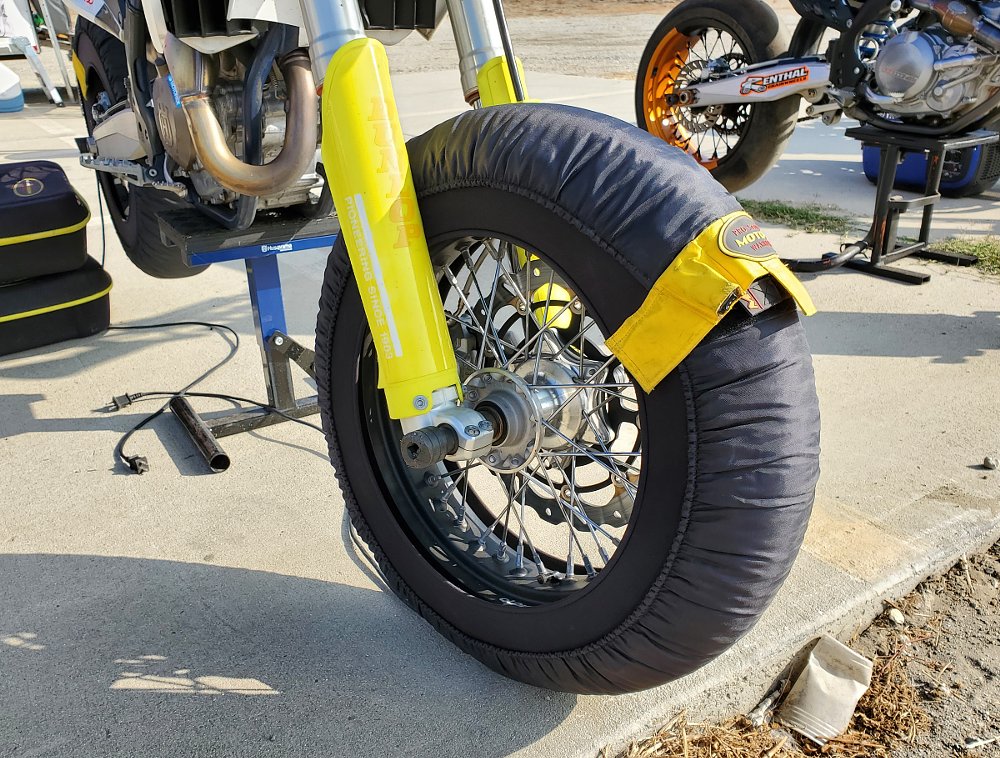
The format
The Live 100 Moto Supermoto School creates a more premium experience by making quality track time a priority. The day kicks off at 9 a.m. sharp and ends when the track goes cold at 4 p.m. Each school day only has around five or six riders at a time, guaranteeing a wide-open track. Whether you want to avoid the obstacles of slower riders, or avoid being the obstacle, the small number of riders on track organically alleviates those tense moments. If you have ever been to an overbooked track day, you definitely understand and appreciate the care taken here to ensure you have a great day of riding.
As is common with go-kart tracks in SoCal, the supermoto bikes trade 30-minute sessions with the go-karts. This cadence creates the perfect balance of riding and instruction to keep you well rested and ready to ride.
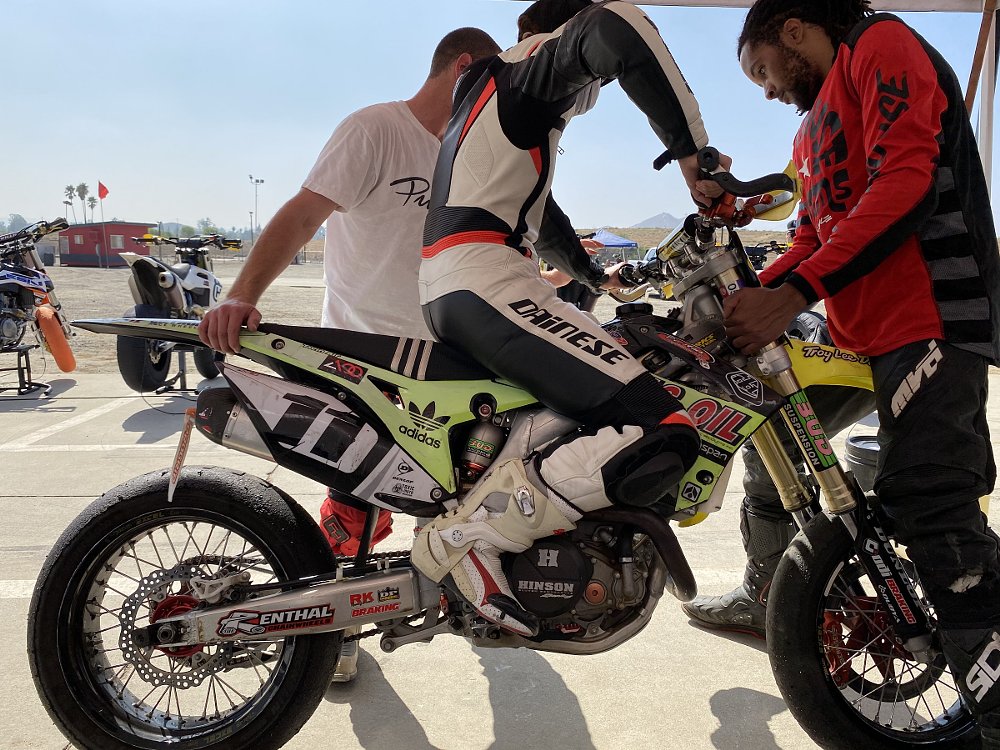
The instruction
Djamil admits his school caters to advanced riders looking to improve their skills. His student body consists of bonafide supermoto and road racers looking to find that extra edge for their racecraft. Sure, fun is still on the agenda, but Djamil is adamant that progression and improvement are his priorities.
My main goal was not to shave my lap time but to unlock the secrets of the foot-out style that defines supermoto. In all of my past supermoto experiences, I was either too timid or too focused on my default knee-down roadracing technique to really make an attempt at the classic foot-out supermoto style of cornering. Lucky for me, motocross and supermoto shredder Etai Naor was on hand to help me bridge the gap from knee down to foot out.
Along with ample track time, break-out sessions relied on tried and true teaching components such as POV video review for race line study, a body positioning clinic, lead and follow on the track, and track map overviews with reference points. What takes these teaching sessions to the next level is the hyper-focused instruction from Djamil and Etai Noar with each student, due to our small number and similar skill level.
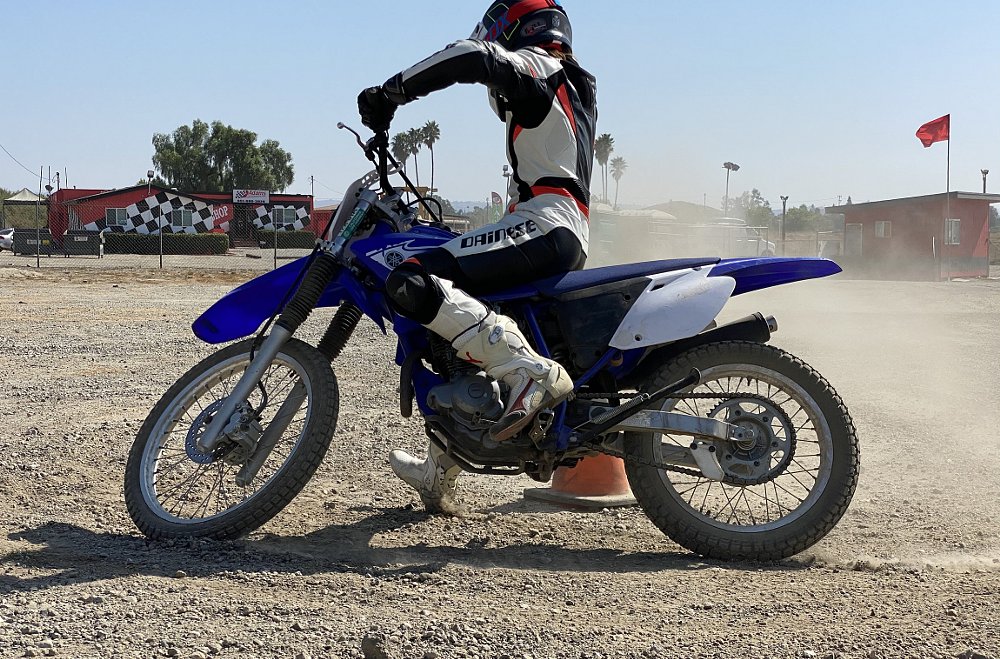
I was surprised when we practiced cornering skills in the dirt parking lot on a pit bike. Backing it in on the tarmac can be pretty intimidating but getting a little hooligan on a play bike helps break the ice on more advanced techniques. I benefited from the body positioning clinic, and learned that I need to think more “knee up” versus “foot out” to unlock some of the secrets of that elusive supermoto style. Up to this point, I’ve been applying all I had learned in motocross and flat track to my foot-out attempts on the supermoto track. Djamil demonstrated that supermoto requires a slight variance for safety and progression.
“Knee up” became my mantra — lift my knee and leg to position it instead of dangling a foot and hoping for the best. It also helped that instruction wasn’t limited to the pits. Etai pulled me over a few times on track to correct bad habits and improve my lines.
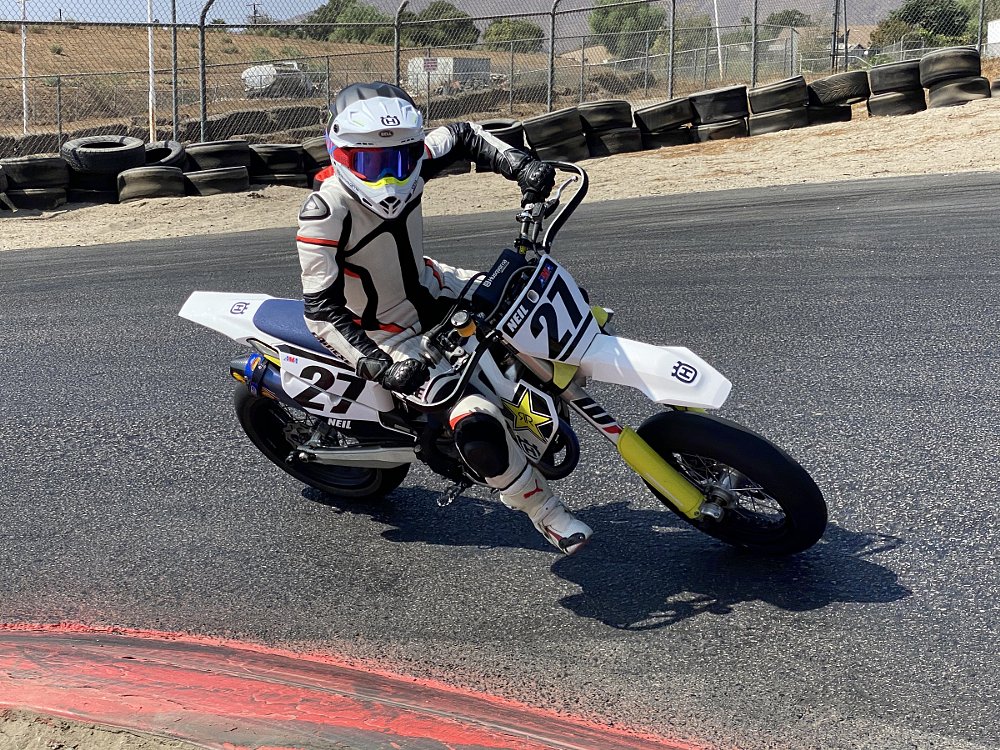
Live 100 Moto school: The recap
My past supermoto experiences have been fun but hindered by finicky bikes and overcrowded tracks with pileups and crashes. Live 100 Moto Supermoto School raises the bar and is your fast track to improving your skills and enjoyment of the sport. Their $495 price tag is pricey but the value is apparent — a race-ready FS 450, fully prepped pit setup, expert instruction and quality track time. To show up at the track with just a gear bag and no worries is well worth the premium.
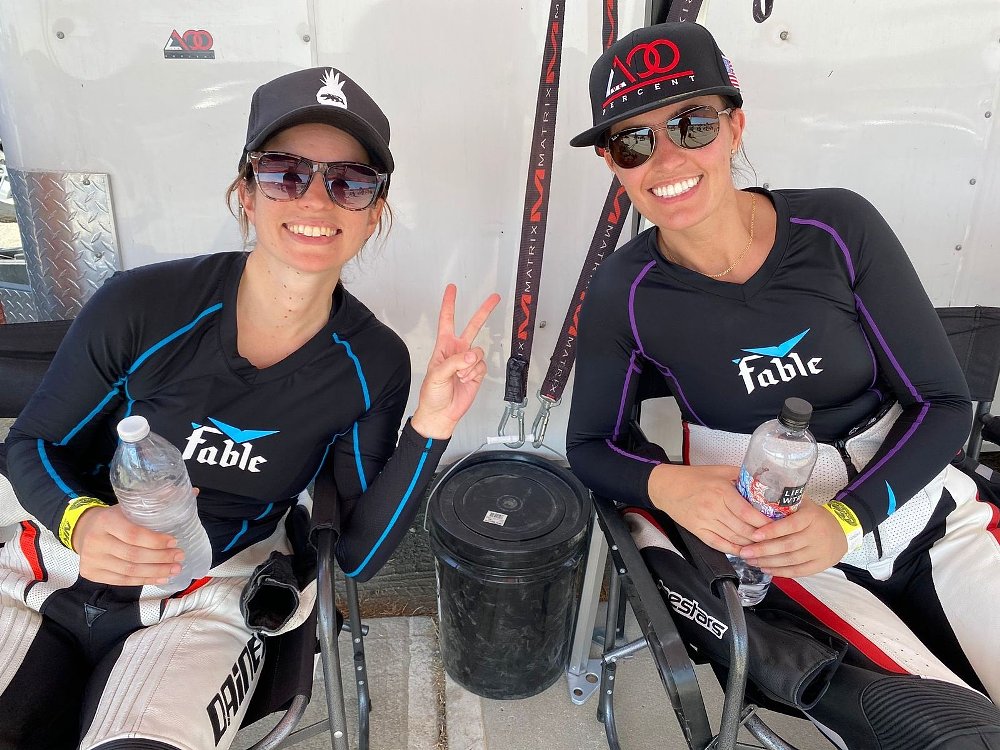
If you're ready for the white-glove supermoto experience, Live 100 Moto Supermoto School has your option.

 Membership
Membership










